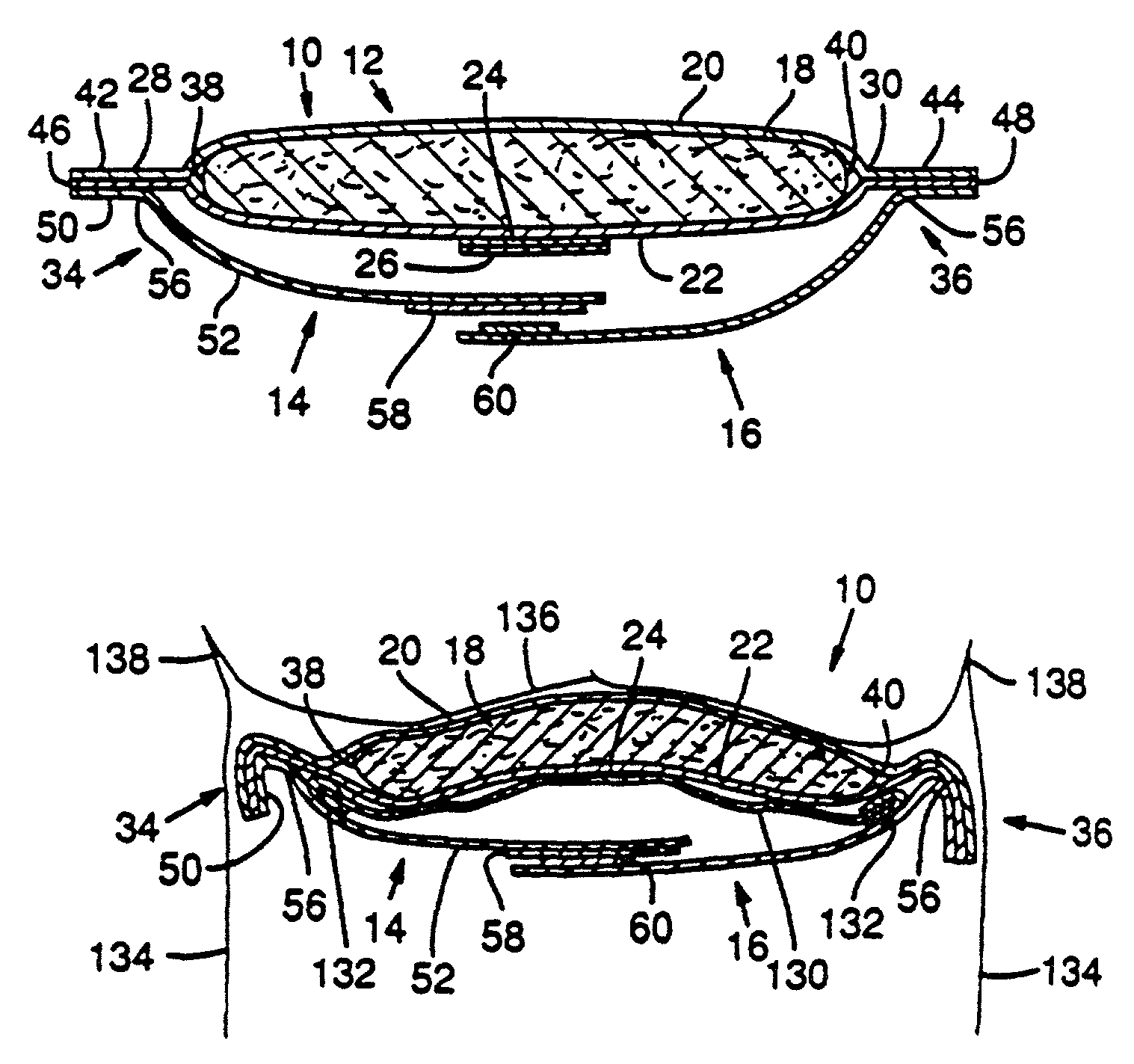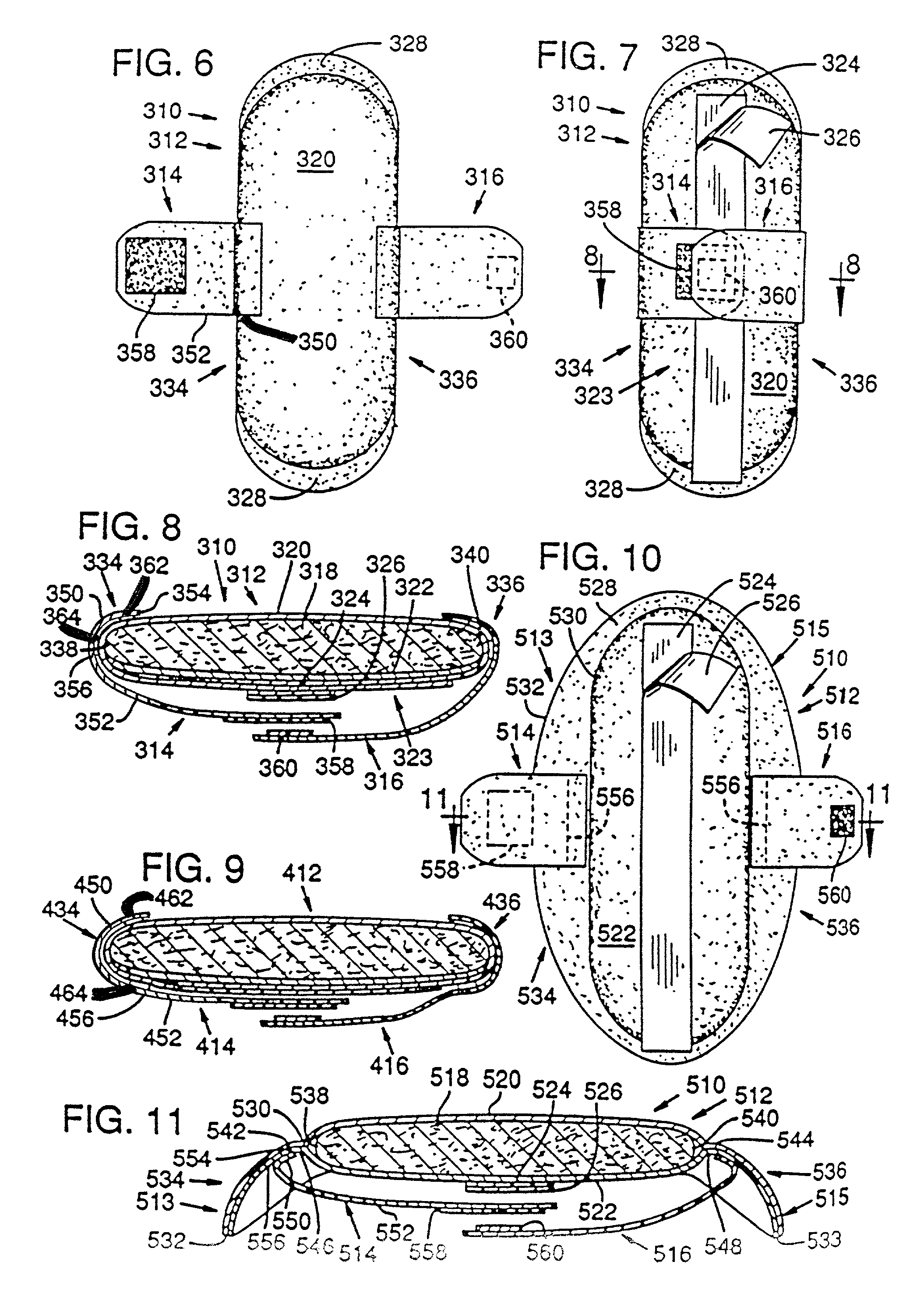Sanitary napkin with garment attachment panels
a technology of garment attachment and sanitary napkin, which is applied in the field of sanitary napkins, can solve the problems of panel loosening, discomfort for users, and inability to achieve desired configuration in practice,
- Summary
- Abstract
- Description
- Claims
- Application Information
AI Technical Summary
Benefits of technology
Problems solved by technology
Method used
Image
Examples
second embodiment
[0049]Referring to FIG. 4, the invention is shown. Here, a sanitary napkin 210 is shown having an absorbent pad 212 with a second exemplary size and shape of garment attachment panels 214 and 216. The panels 214 and 216 are carried by the longitudinal side edges 234 and 236 of absorbent pad 212. In this example, the garment attachment panels 214 and 216 are longer at their effective attachment points 256.
[0050]There are many suitable alternative arrangements for making the juncture between the absorbent pad and the garment attachment panel. Preferably, any arrangement should provide an “effective attachment point” on the underside of a side edge 34, 36 and 234, 236 respectively, and inset from its outer periphery, as exemplified at 256 and 56, see FIGS. 4 and 5, respectively. The garment attachment panel may, for example, be formed from an extension of the cover and / or the baffle of the absorbent pad. It may be a separate piece of material, wrapping over the side edges 34 and 36 wit...
first embodiment
[0051]Another mode of attachment of a garment attachment panel is shown in FIG. 11. Here, compared with the first embodiment shown in FIG. 5, the attachment configuration for a garment attachment panel has been reversed. The fixed portion of the panel has been laid on the underside of a “side edge” with the panels initially directed outward. This embodiment will be discussed in more detail below.
third embodiment
[0052]Referring to FIGS. 6, 7 and 8, the invention is shown. Here, a sanitary napkin 310 is depicted having a generally conventional elongated absorbent pad 312 and a pair of garment attachment panels 314 and 316. An absorbent 318 is contained between a liquid-permeable cover 320 and a liquid-impermeable baffle 322. The cover 320 completely wraps the absorbent, overlapping on the garment side 323 of the pad and thus overlaying the baffle 322. A strip of garment adhesive 324 which is protected by a peel strip 326 are provided on the garment side 323 of the pad. The cover 320 is sealed at each of its opposite ends by an end seal 328.
[0053]In this third embodiment, the garment attachment panels 314 and 316 may be similar in construction and range of size and shape to those suggested above for the garment attachment panels 14 and 16. The mechanical fastener provided for the garment attachment panels 314 and 316 may also be similar in all respects to that of the first embodiment and is r...
PUM
 Login to View More
Login to View More Abstract
Description
Claims
Application Information
 Login to View More
Login to View More - R&D
- Intellectual Property
- Life Sciences
- Materials
- Tech Scout
- Unparalleled Data Quality
- Higher Quality Content
- 60% Fewer Hallucinations
Browse by: Latest US Patents, China's latest patents, Technical Efficacy Thesaurus, Application Domain, Technology Topic, Popular Technical Reports.
© 2025 PatSnap. All rights reserved.Legal|Privacy policy|Modern Slavery Act Transparency Statement|Sitemap|About US| Contact US: help@patsnap.com



